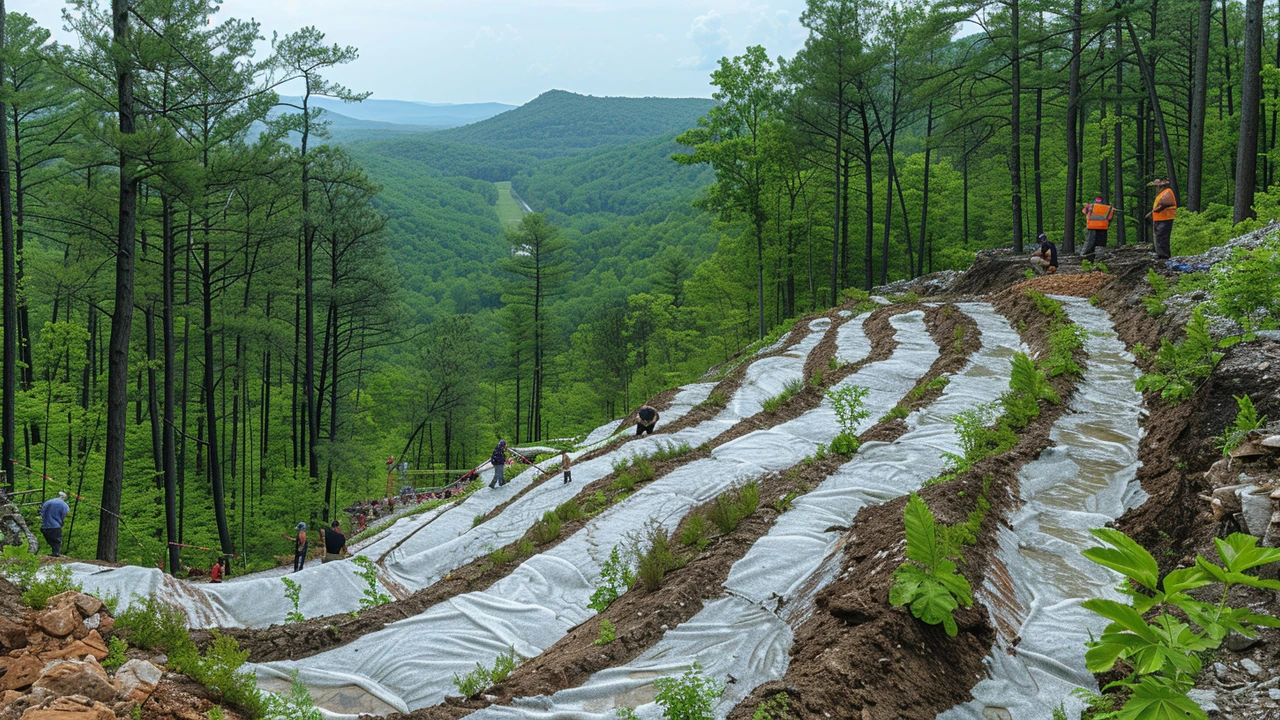Tracing My First Encounter with Land Art
Let's take a stroll down memory lane. Picture me, Fiona, young and full of wonder, watching my greyhound Jasper chase the squirrels in our yard. Fascinated by his endless energy, I spent hours sketching him in his natural playground. And in that pursuit, something magical happened! I realized that art exists not just in the lines drawn on a canvas but also within the very lines and forms of nature that surround us every day. That’s when I discovered Land Art!
Imagine my surprise when I found out there was an entire art movement dedicated to this concept. Land Art, also known as Earth Art, finds its canvas in the natural landscape. It's not about bringing nature into art, rather, it's about bringing art into nature. The prime materials? Rocks, twigs, leaves, sand, or even snow! Did you know that the origins of this art form, dating back to the late 1960s and early 1970s, came from an era when artists started questioning the commercialization of art and sought out alternative spaces for creation? Now roll up your sleeves, folks! We're about to explore the world of Land Art through my lens.
Diving into the Vastness of Land Art
Entering the realm of Land Art is like stepping into a world that beautifully blurs the boundaries between art and Mother Nature. It's an art form that finds inspiration in the corners of the Earth, welcoming you to explore the landscapes and sceneries untouched by modern chaos. The artworks are ephemeral in nature, whispering tales of transience and reminding us of our mortality in this ever-changing world.
The beauty of Land Art lies not only in the creativity of the artist but also in the unpredictable elements of nature that contribute to the art. Weather, for instance, plays a crucial role in shaping the final outcome. While one artwork might be molded beautifully with the assistance of a light breeze, another might be washed away by a torrential downpour. Just imagine the thrill and anxiety of waiting for the finished masterpiece!
The Hidden Messages of Land Art
Land Art isn't merely about beautification; it carries a profound meaning that resonates with the human spirit. As I delved deeper into Land Art, I discovered that each piece weaves together intricate narratives, symbolizing multidimensional themes like the passage of time, the fragility of life, and the enduring power of nature.
Remember the photos floating around the Internet of the mysterious monoliths popping up around the world? Those towering, sleek structures were quintessentially Land Art, designed to inspire awe and speculation. They brought out a universal response of curiosity and wonder from people, communicating without speaking a single word—proof that Land Art not only beautifies our world but also unites us in shared experiences.
Land Art in Every Corner of the World
The dazzling array of Land Art sites scattered across the globe fascinates me to no end. From "Spiral Jetty" by Robert Smithson in Utah’s Great Salt Lake to Richard Long's "A Circle in Alaska" and Andy Goldsworthy's ephemeral works in the United Kingdom, Land Art has graced every part of Earth. Do you know how utterly exciting it is to imagine these humongous works of art etched upon the canvas of our Earth, visible from the highest mountains and even from space?
Each Land Art piece has been influenced by, and reflects, the culture, history, and landscape of its location. It's an enchanting dialogue between the artist and the earth, resulting in landscapes that stir the heart and ignite the imagination.
Creating Your Own Land Art: Tips and Guidance
If my journey through the world of Land Art has stirred a spark within you, then I'd advise you to act on it. Creating your own Land Art can be a profound, meditative experience, serving as a tether connecting you to the essential energies of nature. The beauty of Land Art lies in its simplicity. All you need are hands willing to create and a heart receptive to the whispers of nature.
Choose your location, gather your natural materials, and let your creativity take flight. Remember, your piece doesn't have to endure forever. Great beauty can be found in transience, and each creation's temporal journey from birth, through transformation, and eventually to decay, is an essential part of the Land Art experience. Take it from me and Jasper, the time spent creating Land Art will be filled with joy, peace, and an enriching connection with the natural world.



